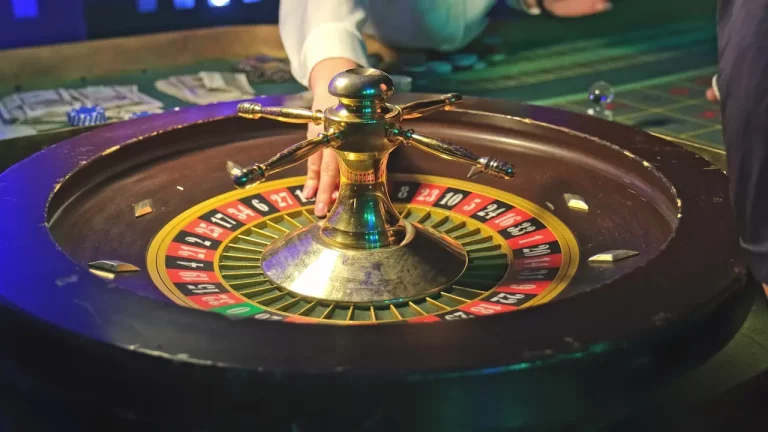Blackjack is one of the most iconic games in the casino, and one of the most enjoyable to play as well. The origin of the game can be traced all the way back to the 1600s, although there have been a number of changes to the way it’s played since then. Today Blackjack is one of the most popular games played on both land-based and online casinos, and in simplified form the rules simply require that the player beats the dealer by scoring a hand closer to – but not over – a total of 21 points.
I have worked in the casino industry for years – including as a casino croupier – so I want to share some crucial blackjack tips with you on this page.
After receiving your first two cards, you will be able to see just one of the dealer’s card. At this point there are up to four actions you can take as the player: Stand (don’t take any more cards); Hit (take another card); Double (double your stake and then receive just one more card, after which you have to stand); or Split (create two hands from your one hand, only an option if you have two cards of the same value).
If you plan to take your blackjack play a little more seriously then it’s a good idea to try and memorize a basic strategy which will tell you what action to take based on every card combination. However, if you want to get started straight away then we have got five great playing tips which will immediately take your game to the next level.
Let’s get started with our 5 Top Blackjack Tips:
1. Always Stand on a Hard 17 or Higher
A ‘hard’ 17 means a combination of cards totaling 17 which does not include an Ace, since the Ace can have a value of either 11 or 1. To give examples, a hand of K7 is a Hard 17, while a hand of A6 is a Soft 17, since it can either total 17 or 7, as you choose.
Any time your cards total between 17 and 21 and don’t include an Ace it is best to Stand and don’t take any more cards since there’s a high probability you will go bust (great than 21 total) if you do. The dealer must keep taking cards until they get to at least 17, so this maximizes your chances of either having a better hand or letting the dealer go bust.
2. Hit on a Soft 17
While we recommend to stand on a Hard 17, the opposite is true if you have a ‘soft’ 17 – one which contains an Ace. There is no chance of going bust in this case, because if you happen to get dealt a card valued 5 or higher, you change the Aces value to a 1 and you are still in the game. For example, if you are dealt an Ace and a 6 to total 17, and are dealt a 4, your new total is 1 + 6 + 5 = 11. Now you can Hit again to take another card, with the odds always favoring that you will get a card valued 10.
Sometimes it’s okay to Stand with your soft 17, but if the dealer’s visible card is a 7 or better then it is always better to Hit and hope for a better score.

3. Double Down on 11 vs Dealer’s Lower Card
Doubling down is an important tool for blackjack players, but it should always be used at the right time. Basically, you want to double down when the dealer shows a weak card – 4, 5 and 6 are particularly bad – and yours is strong and likely to be improved by taking just one more card.
A hand totaling 11 provides the best opportunity to double down. Remember, of the 52 cards in the deck 16 of them have a value of 10 points (10, J, Q, K) meaning that there is always a better than average chance the next card will be worth ten. 11 plus 10 gives you that magical 21, and a dealer showing a weak visible card will be very unlikely to be able to match you.
4. Always Split Aces and 8s
When you are dealt two cards with the same value, you always have the option to Split. This means you form two hands out of your one, doubling up your stake at the same time. So imagine you decided to split a pair of 9s (bad idea!), you give up your strong hand worth 18 and have two hands which each have a 9. The dealer gives you two more cards – let’s say a 4 and an 8 – and you now have two new hands with values of 9+3=12 and 9+8=17. Both of these are worse than what you started with, and you could lose twice over!
However, sometimes it is ALWAYS a good idea to split your cards, and this is true whenever you get dealt a pair of Aces or 8s. Two Aces total either 2 (1+1) or 12 (11+1), neither of which are much good. A pair of 8s totals 16, which will only win if the dealer goes bust, unless you luck in by deciding to hit and getting a 1-5 value card. Much better to split Aces and 8s in the hope of landing two strong hands instead of one weak one.
5. Never Split 5s and 10s
Rookie blackjack players love to split 10s, imagining that they are going to land two more tens to give strong hands of 20 apiece. This is not a good idea. We have mentioned before that 10s are more likely to appear than any other number, but at the same time there are still 36 non-ten value cards as opposed to the 16 worth 10. In other words, it is not worth the risk of breaking up your perfectly good 20 in the hope of landing two more hands of equal or better value.
Fives are an even worse idea to split, because you are taking away your solid starting hand of 10 and replacing it with two potentially bad hands starting with a 5. If you end up with a couple of hands worth 15 points each then your best hope is for the dealer to go bust, otherwise you have just doubled your losses.
Is this everything you need to become a top blackjack player? No, but it is a very good start! Take the advice above as your basic blackjack strategy, and as you get more comfortable with the game try to introduce more subtle strategies into the way you play based on individual hands of cards. Good luck!
Experienced casino writer and former croupier
Ross O’Connor







